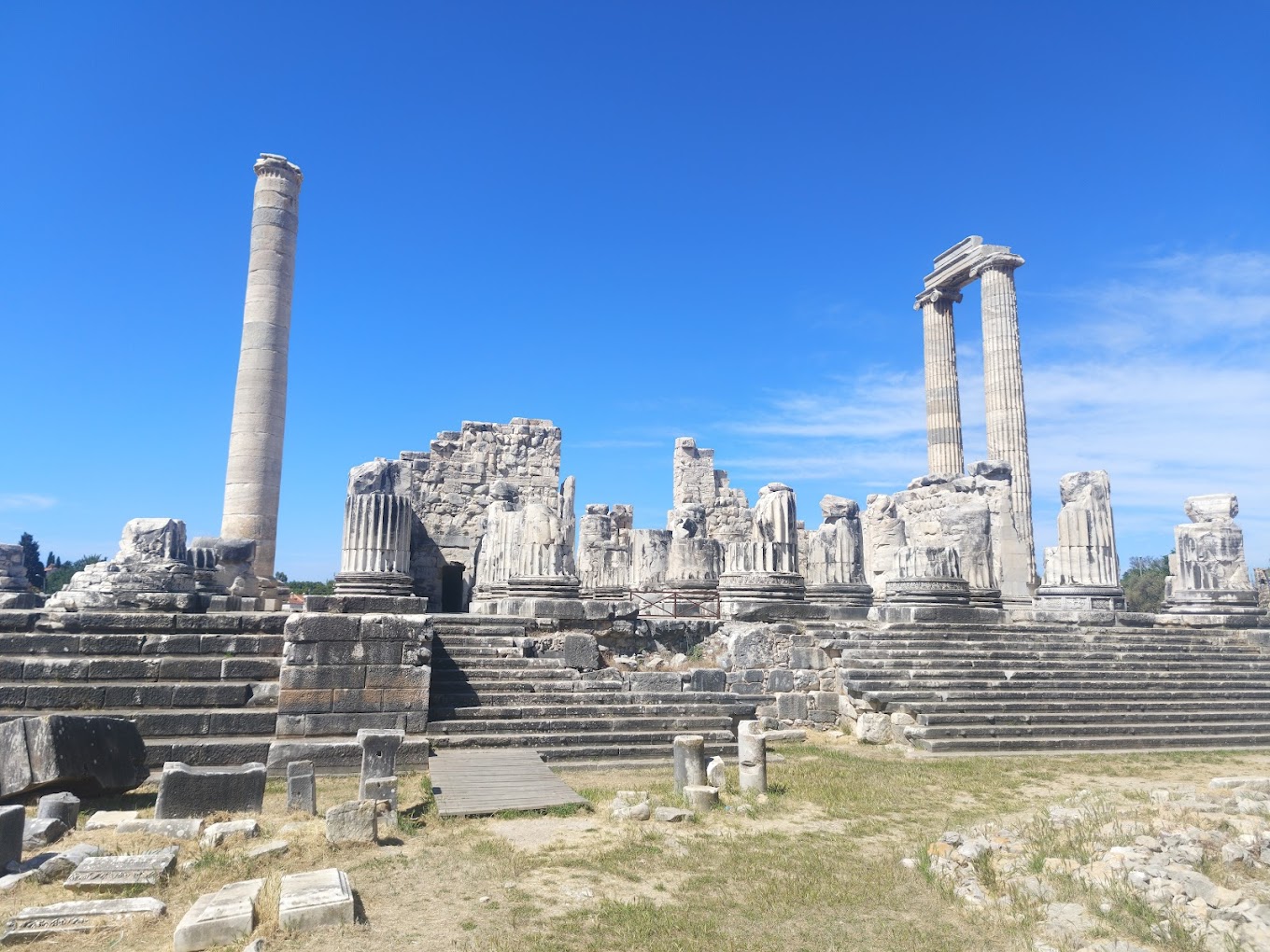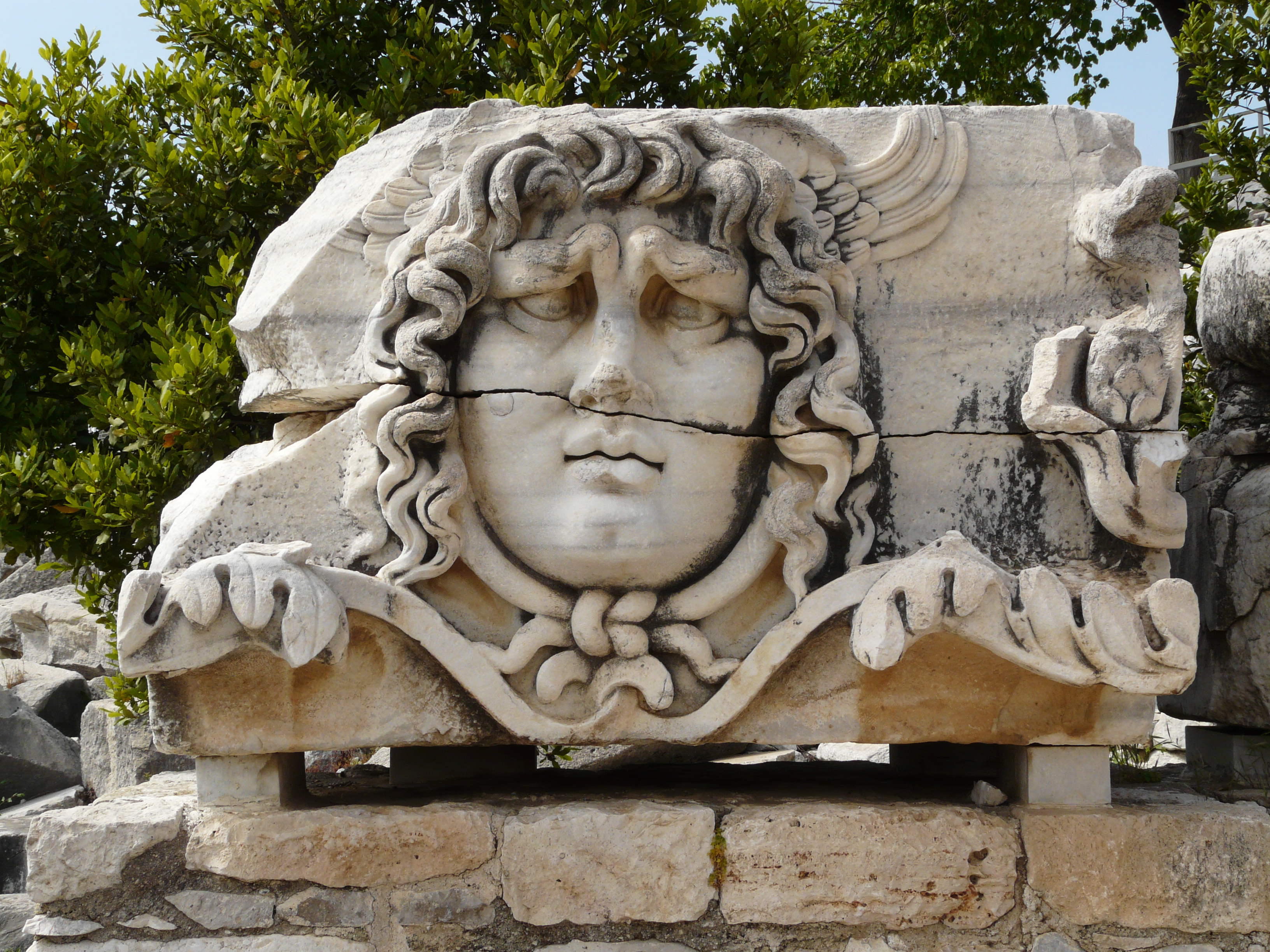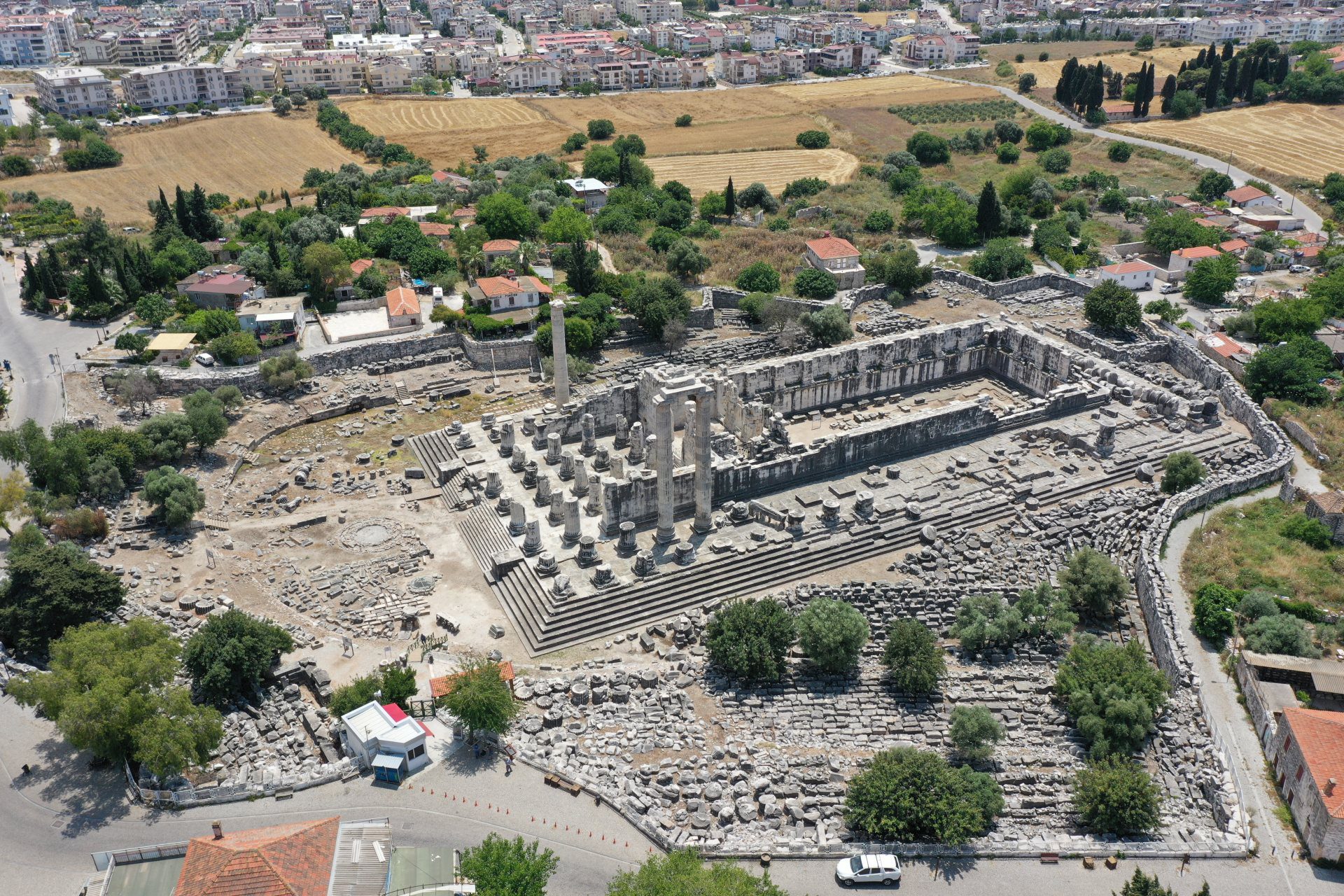Have you ever felt the whispers of thousand-year-old stones? Have you ever imagined walking the same paths where kings and commanders once sought to learn their fates? When you lift your gaze from Didim's famous golden sands and turquoise sea, a place where time seems to stand still awaits you for just such a journey: the magnificent Temple of Apollo. Perhaps you're asking yourself, I've come to Didim, the beaches are fantastic, but what is there really to do at this giant ancient temple? This very question is the key that will transform you from a mere tourist into a time traveler.
In this article, we won't just give you a checklist; we will guide you through the things to do at the Temple of Apollo in Didim, allowing you to experience them one by one and connect with the soul of this sacred place. This is not just a pile of stones; it's one of the ancient world's most important oracle centers and largest sacred sites. If you're ready, let's embark on an unforgettable adventure amidst the whispers of legends, gods, and one of history's most ambitious projects.
Walk Among the Colossal Columns of the Ancient World's Third-Largest Temple
Even as you take your first steps from the parking lot, the colossal marble columns reaching for the sky greet you, instantly making you feel 'small'. This initial encounter is just the beginning of the experience the Temple of Apollo offers. It doesn't hold the title of the ancient world's third-largest temple for nothing; it is the most imposing structure after the Temple of Artemis in Ephesus and the Heraion of Samos. To put it in numbers, the temple's platform covers more than 5,500 square meters, nearly the size of a football pitch.
As you get closer to the few columns that have managed to survive, you grasp the scale even better. Each one is about 20 meters high, equivalent to a 6-7 story building. They are so wide that even two people holding hands can't fully wrap their arms around a single column. Walking among these massive columns, it's natural to feel like an ant. This was precisely what the ancient architects wanted you to feel: your mortality in the face of the gods' power.
However, one of the most fascinating aspects of this temple is its unfinished story. Yes, you heard that right. Construction of this massive project began in the 4th century BC after Alexander the Great defeated the Persians, but it was so ambitious and costly that it was never fully completed, despite work continuing into the Roman era. Wars, changing empires, and finally the rise of Christianity caused this architectural dream to remain incomplete. And here's a little-known secret: the fact that the temple was unfinished left us a priceless gift. On the walls of the inner courtyard, archaeologists found the project's massive plans—an ancient architectural blueprint—etched into the marble at a 1:1 scale! Because the walls never received their final polish, these secrets have survived to this day. So, what might seem like a flaw actually gifted us one of history's greatest secrets. This architectural genius isn't unique to the Temple of Apollo. You'll encounter similar examples of brilliance as you explore other ancient wonders of the Aegean.

Find the Famous Medusa Relief in the Sacred Area
Once you can tear your eyes away from the temple's magnificent columns, another legend awaits you. Look for the famous Medusa head on a massive, toppled marble block near the entrance to the temple garden. Despite being exposed to wind and sun for centuries, this relief, with its snake hair and piercing gaze, is still incredibly impressive and has become a symbol of Didim.
But Medusa's story is more than just a monster's tale. She was once a mortal woman whose beauty made even the goddesses jealous. According to legend, when the Sea God Poseidon assaulted her in Athena's temple, the enraged goddess Athena punished the victim, not the perpetrator. She turned Medusa's beautiful hair into snakes and her face into a horrifying visage that could turn onlookers to stone. Her story is, therefore, one of tragic power and suppressed rage.
So why would such a 'fearsome' figure guard a sacred temple? This is where an interesting belief of the ancient world comes into play. The logic of like cures like was prevalent. Medusa's terrifying power was used as a shield to protect the temple from evil spirits and intentions. It was believed that her petrifying gaze would turn any evil directed at the temple to stone. Thus, the Medusa relief was not just a decoration but the temple's most powerful protective talisman. When you find it, remember that you are not just looking at a stone, but at a thousand-year-old belief, a mythology, and a tragic legend.

Feel the Energy of One of the Ancient World's Most Important Oracle Centers
To truly understand the Temple of Apollo, you must know that it was not just a building, but one of the most powerful oracle centers of the ancient world. Didyma was not a large city; it was a sacred sanctuary and center of divination connected to the great port city of Miletus by a Sacred Way. According to legend, the god of prophecy, Apollo, met a shepherd named Branchos here and taught him the secrets of divination. The descendants of Branchos, the Branchidae, served as the priests of this temple for centuries, spreading its fame throughout the Mediterranean.
When you arrive, close your eyes and imagine: a merchant from Egypt, a king from Lydia, a commander before going to war... All of them came here to learn their destiny. Even the superpowers of the era, like King Croesus of Lydia and Pharaoh Necho of Egypt, offered dedications here. The oracle's spring, which had gone silent after the Persian invasion, began to flow again with Alexander the Great's victory, giving its first prophecy to the young commander. This place was, in a way, the intelligence center of the ancient world; decisions were made here, and the fates of wars were decided.
The ritual was quite complex. Visitors would offer sacrifices, purify themselves with holy water, and write their most important questions on a piece of paper. A priestess, in a trance by the spring in the sacred courtyard (adyton), would utter incomprehensible sounds inspired by the god Apollo, and the temple priests would interpret these sounds into poetic prophecies. The fate of a battle you were to fight, or a city you were to found, depended on a single verse from here. As you walk among those colossal columns today, try to hear the whispers of centuries in the silence. Stand in the middle of that sacred courtyard and feel the energy of the land where prophecies that once shaped the world echoed. While planning this deeply historical journey, don't forget to take a look at ourAydın Tour Guide page, where we have considered every detail.

Conclusion: Expand Your History-Filled Itinerary
It may be hard to leave the magic of the Temple of Apollo, but since you've come this far, it would be a shame not to explore the other treasures Didim and its surroundings have to offer. Here are a few suggestions to continue your journey through time in ancient Ionia:
Ancient City of Miletus: The great port city to which the Temple of Apollo was connected awaits you just 20 km away. Walk the streets where figures like Thales once walked in the City of Philosophers, and sit on the steps of its massive 15,000-seat theater to listen to the echoes of history.
Ancient City of Priene: Would you like to see one of the world's first planned cities? This city, built on the slope of a mountain with the grid plan of architect Hippodamos, will give you a perfect idea of what life was like in an ancient city. Its streets, agora, and Temple of Athena will enchant you.
Bafa Lake Nature Park & Herakleia: Find peace in the tranquility of Bafa Lake, once a bay of the Aegean Sea, transformed into a lake by the alluvium of the Menderes River. You can experience history and nature together with the ruins of the ancient city of Herakleia on its shore, the unique landscape of the Beşparmak Mountains, and thousand-year-old rock paintings.
Frequently Asked Questions (FAQ)
Visitor's Practical Information Guide
| Topic | Details |
|---|---|
| Location | Aydın, Didim town center, Yenihisar Neighborhood |
| Transportation | Easily accessible by a 5-minute car ride from Didim center or by regular minibuses. |
| Summer Visiting Hours (April 1 - October 31) | 08:30 – 19:00 (Every day of the week) |
| Winter Visiting Hours (November 1 - March 31) | 08:30 – 17:00 (Every day of the week) |
| Entrance Fee | Prices may vary by season. The current fee for foreign visitors is approximately 6 Euros. The Museum Pass (Müze Kart) is valid. |
| Museum Pass (Müze Kart) | Valid, entry is free with the Museum Pass. |
How long does it take to visit the Temple of Apollo?
We recommend setting aside at least 1.5 - 2 hours to fully experience the temple's grandeur, take photos, and soak in the atmosphere. This time may be longer if you wish to examine every detail and read the information panels.
What is the most important feature of the Temple of Apollo in Didim?
Its most important feature is being one of the largest and best-preserved oracle centers of the ancient world. It is also unique for its colossal size, its unfinished state, and its iconic Medusa head relief.
Bibliography
While preparing this article, we utilized many sources to delve into the depths of history. For more academic and detailed information, you can review a reliable source on ancient history (https://www.worldhistory.org/trans/tr/2-640/didim-apollon-tapinagi/).


 English
English Türkçe
Türkçe